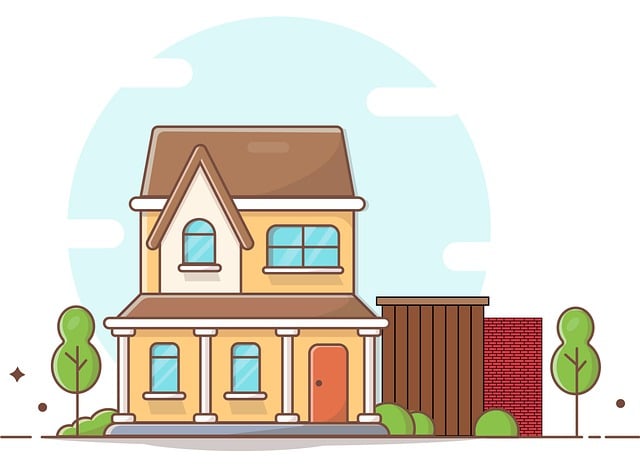DIY enthusiasts facing home improvement projects must be aware of common pitfalls like underestimating scope, skipping permits, hiring unlicensed contractors, and measurement errors. These mistakes can cause budget overruns, delays, structural damage, and reduced home value. Proper planning, including detailed budgeting, permit research, and accurate measurements, is vital to avoid these issues for a successful DIY renovation.
Avoiding Costly Mistakes in Home Improvement Projects
Home improvement can be a rewarding endeavor, but it’s not without its potential pitfalls. This article guides you through understanding and avoiding common DIY renovation errors, budgeting for projects to prevent budget overrun, and the legal and safety risks of skipping permits or hiring unlicensed contractors. We also delve into critical measurement mistakes that can plague even the best-laid plans, offering techniques for precise measurements to ensure project success. By mastering these strategies, you’ll transform your home with confidence, staying within budget and avoiding costly surprises.
Understanding Common Home Improvement Mistakes
Many home improvement projects start with enthusiasm and a clear vision, but they can quickly turn into costly headaches if common mistakes are not avoided. DIY renovation enthusiasts often face challenges that lead to significant budget overruns, delays, or even structural damage. Understanding these pitfalls is key to ensuring a successful transformation.
One of the most frequent errors is underestimating the scale of the project and the resources required, leading to incomplete tasks and the need for costly fixes. Skipping essential permits can result in legal issues and financial penalties. Additionally, hiring unlicensed contractors may save money upfront but can compromise quality and safety. Measurement mistakes, especially critical in DIY projects, can lead to incorrect material purchases and inefficient use of resources. Common renovation oversights include neglecting adequate ventilation, improper wiring, or subpar material choices, all of which can have significant implications for the home’s structural integrity and long-term value.
– Identifying typical DIY renovation errors
Many well-intentioned DIY enthusiasts often find themselves caught in a web of common home improvement mistakes. One of the most prevalent issues is DIY renovation errors; from simple measurement miscalculations to more complex remodeling pitfalls, these can lead to significant delays and budget overruns. Neglecting proper planning, many homeowners skip essential steps like obtaining permits, which can result in legal complications and costly fines.
Another frequent oversight is hiring unlicensed or unqualified contractors, which may seem appealing for saving money but often ends up costing more due to poor workmanship and potential safety hazards. Budget overrun mistakes are common; projects often creep beyond initial estimates as unforeseen issues arise, leaving homeowners with unexpected financial burdens. Being aware of these common renovation oversights can help prevent significant post-project regrets and ensure a smoother, more successful home improvement journey.
– Uncovering remodeling pitfalls that can affect your wallet
Uncovering remodeling pitfalls can be crucial to prevent costly surprises. One of the most common home improvement mistakes is budgeting without thorough planning, leading to budget overruns. Before starting any DIY renovation project, it’s essential to research and allocate funds realistically based on project scope and potential complexities. Skipping permits, often seen as a way to save money, can result in hefty fines and delays down the line. Every region has specific building codes and regulations; ignoring these can cause significant financial setbacks.
Another set of remodeling pitfalls involves hiring unlicensed contractors or making measurement mistakes yourself. Using an unlicensed professional may lead to poor workmanship and potential safety hazards. In contrast, DIYers who skip critical measurements can end up with materials that don’t fit properly, requiring costly adjustments or replacements. Common renovation oversights include not accounting for unforeseen issues like structural problems hidden behind walls or unexpected utility line locations. Such surprises can significantly increase project costs and timelines.
Efficient Planning: The Key to Avoiding Budget Overrun
Efficient planning is a safeguard against common home improvement pitfalls, especially when it comes to budget overrun. Many DIY enthusiasts and even professional contractors fall into the trap of underestimating project costs due to inadequate preparation. Skipping necessary permits, for instance, can lead to costly legal issues and delays. Hiring unlicensed workers might seem like a quick fix but often results in poor quality workmanship, additional repairs, and potential safety hazards.
One of the most fundamental ways to avoid these mistakes is through meticulous planning. This includes detailed budgeting, allowing for contingencies, and comprehensive research on local regulations. Accurate measurements are also crucial, particularly for DIY projects, as incorrect dimensions can lead to material waste and budget overspend. By addressing these planning errors, homeowners can steer clear of costly renovation oversights and ensure their projects stay within financial reach.
In avoiding costly home improvement mistakes, thorough planning and understanding common DIY renovation errors are paramount. By anticipating potential remodeling pitfalls and addressing them proactively, homeowners can prevent significant budget overruns. Always secure the necessary permits to stay compliant and avoid legal issues. Skipping steps like proper measurement or hiring unlicensed contractors can lead to subpar results and hidden expenses. A well-informed approach, including meticulous research and careful selection of professionals, ensures successful projects without breaking the bank.
